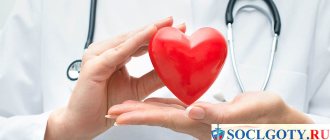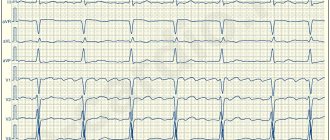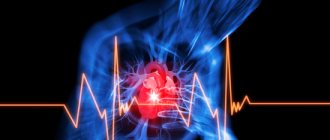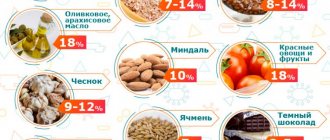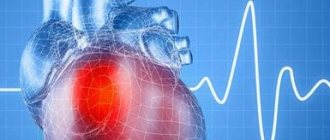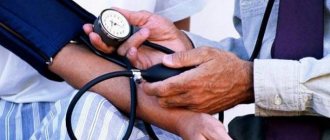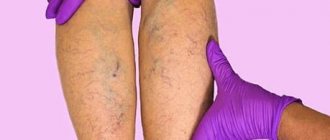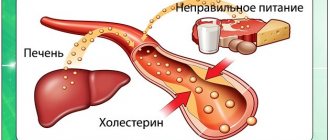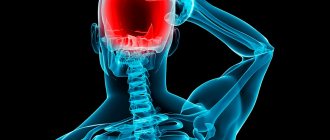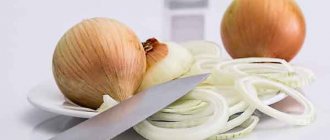Other diseases starting with the letter “F”: Pharyngitis, Pheochromatcytoma, Atrial fibrillation, Breast fibroadenoma, Uterine fibroid, Phlebitis, Cellulitis, Fluorosis, Flux, Phobia, Folliculitis, Functional dyspepsia, Furunculosis (furuncle)
Concept of atrial fibrillation
Atrial fibrillation or atrial fibrillation is an abnormal heart rhythm, accompanied by chaotic excitation and twitching of the atria, as well as arrhythmia of individual muscle fibers of the atrium. The heart rate in this disease simply goes off scale and can reach up to 600 beats per minute.
Attacks of atrial fibrillation can last a day, several days or even weeks. But, nevertheless, if their duration reaches 2 days, then blood clots can form and the possibility of developing an ischemic stroke increases. With constant attacks of fibrillation, chronic circulatory failure can also occur.
Most often, this disease occurs in older people over the age of 60 years. 30% of hospitalizations that are carried out these days are patients with atrial fibrillation.
Classification of the disease
Now much is known about this disease, and it is successfully treated, and taking into account its knowledge, cardiologists offer the following classification:
- The occurrence of arrhythmia in a chronic (permanent) form. In this case, the symptoms are quite pronounced, and other diseases that were described above develop.
- Persistent form. Attacks may last more than a week, but not on a constant basis, and symptoms may not manifest themselves.
- Transitory form. The attack lasts 1-7 days.
- The latter form is often recurrent. Sometimes doctors also identify the first manifestations of arrhythmia as a separate classification.
Forms of the disease and its course
The disease differs in that it can occur through various types of abnormalities:
- Actually, fibrillation itself. With it, only individual groups of muscle fibers contract. Because of this, impaired contraction occurs. Therefore, a huge number of electrical impulses are collected at the atrioventricular junction. Some of them go to the ventricular myocardium, while the other part is retained.
- Atrial flutter. With flutter, doctors note that the contraction can increase up to 400 times per minute, but the heart rhythm is always maintained. There is a continuous contraction of the myocardium, so the moment of relaxation does not occur. The atria do not relax, so they are in a working state most of the time. They cannot be completely filled with blood, which reduces its flow into the ventricles.
There are three forms of arrhythmia during ventricular contraction:
- bradysystolic (in which the ventricles contract less than 60 times per minute);
- normosystolic (in which the ventricles contract 60-90 times per minute - these are normal values);
- tachysystolic (in which the ventricles contract more than 90 times per minute).
In a transient form of arrhythmia, blood does not collect in the ventricles in the required quantities. The atria are not able to contract effectively, because of this, at the moment when the heart is in a state of relaxation, the ventricles are filled with blood only to some extent. It follows that blood is not always thrown into the aorta and with less force than necessary.
Healing herbs
Lovage officinalis
A perennial plant that reaches a height of 2 meters.
For treatment, you can use roots, inflorescences and leaves. They contain tannins, essential oils, lecithin, minerals and acids. Properties of medicinal lovage:
- sedative;
- anti-inflammatory;
- antibacterial;
- antispasmodic;
- painkiller.
Suitable for treating arrhythmias caused by nervous disorders and infections. Reduces pulse and eliminates heart pain.
Violet tricolor
A plant that is found in southeast Russia. Its leaves contain tannins, salicylic and ascorbic acid, glycosides and phytoncides.
Plant properties:
- anti-inflammatory;
- antispasmodic;
- antiseptic.
Tricolor violet improves metabolism, helps cope with insomnia and nervous agitation. Calms the heart rate during arrhythmia.
It is used for heart failure and strengthens the walls of blood vessels.
Adonis spring or adonis
Often called a heart herb because it treats heart disease. The composition contains cardenolides, which are cardiac glucosides. The plant is also rich in flavonoids, organic acids and alcohols. Properties:
- stimulating;
- tonic;
- calming.
Adonis is a potent remedy against weak blood circulation. Stimulates and improves cardiac contractility.
The plant is poisonous, so it must be used carefully. Prohibited for use for gastritis and gastrointestinal diseases
In large quantities it causes dyspepsia.
Rue
The plant grows in the Mediterranean. Used for medicinal tea, and also as a seasoning for dishes. The leaves contain the flavonol rutin, essential oils, salicylic acid, renin, coumarins and phytoncides. Helps with arrhythmias with high heart rate.
Basic properties of rue:
- soothing;
- anticonvulsant;
- antiseptic;
- restorative;
- painkiller.
The herb is used in folk medicine for weakness of blood vessels and tachycardia. It reduces inflammation and helps eliminate neurotic disorders.
The plant is poisonous and should not be used for hypotension and gastrointestinal diseases.
Fumyanka officinalis
A herb that can be found throughout the European part of Russia. Used in folk medicine to improve heart function. Basic properties:
- antiseptic;
- anti-inflammatory;
- tonic.
Fumigation increases heart rate and is suitable for the treatment of bradycardia. Has a stimulating effect on the nervous system.
It is not recommended for use in hypertension and tachycardia.
Causes of the disease
One of the main causes of atrial fibrillation is a malfunction of the conduction system of the heart muscle, which, in turn, disrupts the order of heart contractions. The contraction of muscle fibers does not occur synchronously. They contract at different rhythms. Therefore, the atria do not have the ability to make one powerful impulse every second and instead only tremble, unable to push the required amount of blood into the ventricles.
The following causes that cause fibrillation are divided into cardiac and non-cardiac.
Cardiac ones include:
- Having high blood pressure. With hypertension, the heart has to work harder and pushes out too much blood. It becomes more difficult for the heart muscle to cope with the additional load, it begins to stretch and weaken. In this case, disturbances also affect other organ systems and interfere with the normal functioning of other functions of the heart muscle.
- Valvular heart defects, diseases of the heart muscle, such as myocardial infarction or rheumatic heart disease and others. They themselves reduce the performance of the heart, and in combination with arrhythmia can lead to cardiac arrest.
- Congenital heart defect. It is noted that the vessels are not well developed and cannot sufficiently nourish the heart; the heart muscle is formed rather weak.
- Tumors of the heart muscle. They cause various disturbances in the structure of the conduction system, thereby preventing the impulse from passing through.
- Operations that were performed on the heart. In the period after surgery, the formation of scar tissue is sometimes observed; it replaces the cells of the conduction system of the heart. Therefore, the nerve impulse begins to pass along the wrong paths.
Non-cardiac include:
- bad habits;
- thyroid diseases;
- physical fatigue;
- stress, depression;
- drinking caffeine in large quantities;
- viruses;
- taking medications containing adrenaline and having a diuretic effect;
- diabetes;
- electric shock.
Berry pickings
Medicines based on certain types of berries help reduce myocardial excitability and improve the conduction of electrical impulses. The fruits of bush plants contain essential microelements that improve the activity of the heart muscle. Thus, the magnesium and potassium they contain restore heart contractions during atrial fibrillation at the initial stage.
Hawthorn therapy
Hawthorn fruits are a natural anticoagulant, from which infusions, decoctions and tinctures are prepared. When preparing products, it is necessary to observe the dosage of the components in order to prevent the development of side effects.
Hawthorn fruits have an antiarrhythmic effect
The active substances in hawthorn reveal the following effects:
- reduce the excitability of the nervous system;
- tone the muscular system of the heart;
- restore normal rhythm;
- increase the elasticity of blood vessels;
- improve the conductivity of cardiac impulses.
To eliminate pathological manifestations, the following hawthorn-based recipes are recommended:
- Decoction. Take 30 fruits of the plant, pour 250 ml of boiling water. Cook for 15 minutes. Drink small amounts throughout the day.
- Alcohol tincture. Take 300 gr. berries, place them in a 0.5 liter container, fill with vodka until the end. Leave in a dark, cool place for 1 month.
Thanks to home remedies based on hawthorn, blood supply and nutrition to the myocardium are improved. The pharmacy has a wide range of medications based on it, which can be included in complex treatment.
Kalina
Viburnum has vasodilating and antiarrhythmic properties. In combination with other components, it strengthens and reduces the load on the myocardium, preventing the progression of atrial fibrillation.
To enhance the therapeutic effect, viburnum should be taken in combination with other components
The most effective recipes for rhythm disturbances:
- Honey mixture. Mix 100 g in equal proportions. fruits of viburnum and lemon. Grind the ingredients using a meat grinder. Add 0.5 l to the resulting mixture. flower honey. Leave for 24 hours, use 1 tbsp. l. 2 times a day, store in the refrigerator.
- Berry infusion. Place 300–350 g in a container. crushed viburnum fruits, add 2 liters of boiling water. Wrap the container and infuse the medicine for at least 8 hours. Strain the finished mixture, then add 0.5 liters of herbal honey to the infusion.
Using viburnum for rhythm disturbances will reduce the frequency of attacks, but patients should be careful when taking the drugs, as they can increase blood viscosity.
Rose hip
Rose hips are a storehouse of microelements and vitamins that are beneficial for the cardiovascular system. Plant-based products are considered powerful antioxidants and also help strengthen the immune system. Regular use of medicinal infusions and decoctions helps to increase the elasticity of blood vessels and strengthen the heart muscle.
Rosehip products help lower blood pressure and reduce the frequency of heart attacks
To eliminate ventricular fibrillation, alternative medicine recommends using the following recipes with rose hips:
- Decoction. Place 25 gr. rose hips into a saucepan with 0.5 liters of water. Cook over low heat for no more than 15 minutes. Use 50 g. 2 times a day.
- Combined tincture. Mix hawthorn infusion with rosehip infusion, add 20 g. honey Take 2 times a day, ½ cup.
Medicines with rose hips contain a high concentration of ascorbic acid, so people with diseases of the digestive tract are strictly contraindicated from abusing these drugs.
Traditional medicine in the complex treatment of atrial fibrillation makes it possible to achieve long-term remission and reduce the number of chemicals. Along with alternative medicine, patients should adhere to a healthy lifestyle, as well as follow the rules of a balanced diet that prevent an increase in blood cholesterol levels.
Symptoms
Symptoms may vary and be different for different attacks. It depends on the:
- the patient's myocardial condition;
- forms of atrial fibrillation;
- features of the valve apparatus.
As a rule, patients tolerate the last form of arrhythmia worst of all, that is, tachysystolic, in which ventricular contraction exceeds 90 beats per minute. With this form, they may experience the following symptoms:
- dyspnea;
- increased heart rate;
- pain in the heart muscle;
- feeling as if the heart has stopped;
- pulsations of the veins of the neck are felt.
In all cases of the disease the following is noted:
- high sweating;
- chaotic heartbeat;
- fear that cannot be justified;
- trembling in the body;
- polyuria.
Sometimes, with increased heart rate, fainting occurs, but when the heart rhythm is restored, all of the above symptoms disappear.
People who have a permanent form of the disease eventually get along with it and do not notice it.
If the patient notices similar symptoms, he should immediately consult a doctor and undergo a full examination.
When should you definitely see a doctor?
We have already noticed that contacting a cardiologist is urgently necessary for any manifestations of arrhythmia.
You should see a doctor (for consultation) even if you only suspect that heart rhythm disturbances are developing, if the problem occurs periodically and quickly disappears on its own.
In such cases, you should contact a cardiologist at a convenient time within a month.
But sometimes there are situations when rhythm disturbances manifest themselves too aggressively, when the help of qualified doctors is required immediately. We invite everyone to remember those manifestations of the problem that should force the patient to urgently call an ambulance. So, you should call a cardiology team at home in the following cases:
- pain in the heart area is excessively intense;
rapid heartbeat provokes a panic attack (the patient develops a panic fear of death), in which the patient cannot calm down on his own, behaves overly excited, inappropriately;- the problem is complemented by severe nausea, vomiting, disturbances of consciousness, and numbness of the limbs.
With the clinical manifestations of arrhythmia described above, you should immediately call a medical team and try to calm, lay or sit the patient down, giving him valerian or motherwort (other sedatives). In addition, it is important to provide such a patient with a flow of fresh air - unfasten tight clothing, open a window or door.
Unfortunately, atrial fibrillation is dangerous, first of all, because of its complications, due to which the patient can easily end up in the intensive care unit or on the operating table. That is why, delaying a visit to a cardiologist and self-medicating for atrial fibrillation is, at a minimum, unwise.
Diagnostic methods
Diagnostics includes the following points:
- determining the onset of interruptions in the functioning of the heart muscle, chest pain, and the presence of fainting;
- the doctor's study of the patient's medical history (you need to find out about operations performed on the heart, the presence of chronic diseases, bad habits and similar diseases in close relatives);
- taking tests (blood, urine and biochemistry);
- examination of the skin, its color, the condition of the heart, the presence of noise in it, wheezing in the lungs;
- checking thyroid hormone levels;
- ECG - identifying the presence of a wave, in which you can see the synchronous contraction of the atria, irregular heart rhythm;
- Holter ECG monitoring (a cardiogram must be recorded for 1-3 days. As a result, the form of the disease (or its presence), the conditions of the disease, prediction of its course, the possible occurrence and cessation of attacks are determined);
- echocardiography (this diagnosis is aimed at studying structural changes in the heart muscle and lungs);
- chest x-ray (with its help, they determine whether the size of the heart has increased, and also monitor changes in the size of the lungs);
- Treadmill test or bicycle ergometry (implies a gradually increasing load);
- Transesophageal echocardiography (it is used to determine the presence of blood clots in the atria and their ears).
Treatment
Treatment of this disease is aimed at:
- restoration and further maintenance of the patient’s sinus rhythm;
- further prevention of relapses;
- controlling heart rate.
Treatment involves taking the following medications: Cordarone, Novocainamide, Quinidine, Propanorm.
At the same time, their use should be accompanied by constant monitoring of the patient’s blood pressure level and electrocardiogram. In addition, for transient arrhythmia, the following drugs can be prescribed: Digoxin or Verapamil, and Anaprilin can also be taken. With their help, you can improve the patient's condition and reduce his heart rate, but their effect will not be as pronounced.
There are cases when medication treatment does not produce results. Then they resort to electrocardioversion. In this case, a pulsed electric charge is applied to the area of the heart muscle, after which the attack stops.
If the attack continues for more than two days, in order to avoid the formation of blood clots, doctors carry out anticoagulant therapy for fibrillation using a medicine such as Warfarin. For preventive purposes, Propanorm, Cordanorm and other medications are also used.
A permanent form of arrhythmia is treated with the following drugs: Digoxin, adrenaline blockers, calcium antagonists.
other methods
In addition to the usual methods of treatment: nutrition, medications and folk remedies, non-traditional methods of treatment also help eliminate the unpleasant symptoms of arrhythmia. They are easy to use even at home, both for the treatment and prevention of heart disease. These include:
- aromatherapy;
- respiratory therapy.
Aromatherapy
Aromatherapy has a positive effect on the cardiovascular system.
Aromatherapy is the treatment of a person using the scents of essential oils. There are three types of aromatherapy: using the scent of essential oils, the scent of fresh flowers, and inhaling smoke from burning plants. The first method remains the most popular. Essential oils of rose, rosemary, lemon balm, mint, and anise help well against cardiac arrhythmia. A simple method of using oils is in an aroma lamp: it heats up and the oil evaporates. One session will require only 20 drops of oil (you can use less and add water).
Surgical methods of treatment
Surgical intervention is performed in the following cases:
- antiarrhythmia therapy was not effective enough;
- it is necessary to prevent relapses;
- during transient forms, circulatory disorders may occur and surgical intervention is necessary to restore it.
Most often, cardiologists use the following surgical methods:
- Radiofrequency ablation of arrhythmia sources. A special thin tube is passed through the femoral vessels directly to the heart muscle. A radiofrequency pulse is sent through it, which prevents possible sources of fibrillation.
- Radiofrequency ablation of the atrioventricular node and installation of a pacemaker for the patient. This procedure is performed exclusively for the chronic form of the disease in order to achieve a normal heart rate. A pacemaker is always installed.
- Installation of an atrial cardioverter-defibrillator. This device is designed to block arrhythmia attacks.
The extreme case is open heart surgery. It is only done if there are other serious medical conditions besides atrial fibrillation.
Folk remedies
Treatment at home is also possible, but, of course, they will not help everyone, so you should only contact medical specialists. However, here is a list of the most popular folk remedies:
- hawthorn tincture;
- tincture of viburnum fruits;
- tincture based on dill fruits.
The most convenient thing is that all this can be purchased at the pharmacy. On the Internet you can find many more recipes for tinctures and other ways to prevent and treat this disease at home. But it is always worth remembering that only a specialist, namely a cardiologist, can completely solve the problem!
LiveInternetLiveInternet
- HELP YOURSELF (346)
- POLITICS (193)
- ENERGY (132)
- ENTERTAINMENT (126)
- PRODUCTS (58)
- REJUVENATION (32)
- LAWS (24)
- VEGETABLES, FRUITS (20)
- GEOPATHOGENIC ZONES (20)
- SOUND (17)
- SYMBOLS (15)
- BLANKS (14)
- WORDS (12)
- LONGEVITY (8)
- POEMS (8)
- GMO (7)
- (0)
- LIBRARY (101)
- WATER (43)
- CITIES (23)
- CITIES (25)
- PALACES (31)
- ANIMALS (6)
- LOCKS (28)
- HEALTH (260)
- ART (67)
- HISTORY (26)
- CATS (13)
- KITCHEN (179)
- TREATMENT (78)
- MEDICINE (225)
- MUSIC (271)
- INSECTS (17)
- SCIENCE UNKNOWN (288)
- JOKES (16)
- NATURE (61)
- PSYCHOLOGY (99)
- BIRDS (17)
- RECIPES (213)
- RS (293)
- GARDENS (20)
- SAMODELKINO (28)
- DOGS (5)
- TIPS (119)
- PHILOSOPHY (133)
- PHOTO (24)
- FLOWERS (72)
- FLOWERS (75)
- ECOLOGY (47)
- ENERGY (86)
- HUMOR (23)
Diet food
With such a serious illness, the patient should adhere to a certain diet. He needs to eat food rich in vitamins, macro- and microelements, and substances that can break down fats. These products include: onions, garlic, citrus fruits, fermented milk products, cranberries, viburnum, vegetable oils.
It is necessary to reduce, and, preferably, completely eliminate the consumption of chocolate, coffee, alcohol, fatty meat, lard, flour products, sausages and other smoked meats. In addition, you should refrain from consuming rich meat broths.
To prevent the formation of blood clots, it is recommended to dilute apple cider vinegar (2 teaspoons) in warm water and drink half an hour before meals. The procedure lasts 3 weeks.
Diet
Diet for atrial fibrillation
In order for the heart muscle to function well, you need to eat foods high in minerals. It can be:
- seafood;
- cabbage;
- corn.
If you have atrial fibrillation, you should avoid:
- salty, sweet, seasoned;
- fried, fatty;
- marinades, pickles, semi-finished products;
- carbonated and alcoholic drinks;
- fatty meat.
The best food choice would be a combination of vegetables and lean meat. You should also drink plenty of fluids, don’t get nervous, exercise, and do ECG tests regularly.
Preventive measures
To begin with, prevention involves preventing or treating heart failure. Further, prevention includes:
- mandatory compliance with doctors’ recommendations, since the patient’s life often depends on it;
- performing cardiac surgery, since no “folk” remedies will ensure complete recovery;
- giving up bad habits: alcohol and smoking should be avoided.
Much also depends on the patient’s behavior outside medical institutions. He can prevent the appearance of chronic fibrillation by following simple rules:
- eat rationally and consciously: eat more vegetables and fruits;
- control your weight (excess weight will only add stress to an already weak heart);
- monitor the rise and fall of blood sugar levels;
- take medications only after consultation and recommendations of a specialist (taking medications in excess of the norm or taking less than necessary can aggravate the situation);
- Monitor your blood pressure daily.
It is very important to notice the signs of the disease in time and consult a specialist to prescribe treatment and prevent the occurrence of further problems not only with the heart, but also with other organs.
Vitamin composition to strengthen the heart
It will not be possible to get rid of the risk of heart problems forever after undergoing one course of treatment, but with regular, systematic use of the drug it will be possible to maintain health. In addition to its beneficial effect on the heart, the medicine also strengthens the immune system.
To prepare the product, you need to take 400 g of light raisins and mix them with the same amount of dried apricots and walnuts. After this, everything should be ground in a blender.
Next, 1 medium lemon is added to the composition, which, together with the rind, is cut into small pieces, and 7 tablespoons of May honey, pumped out no more than 10 months ago. Leave the medicinal mixture in a warm place for 3 hours and then put it in the refrigerator.
Take the medicine in the morning and evening, 1 tablespoon. If you have sugar problems, this treatment may be difficult. It is important for obese patients to remember the caloric content of such a product and adjust their diet taking this into account.
Course duration – 1 month. After this, you need to take a break of 3 weeks and take the medicine again. If you are prone to arrhythmia, including such a form as tachycardia, treatment according to this regimen should be constant.
